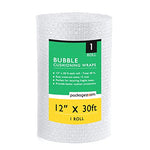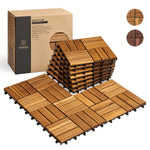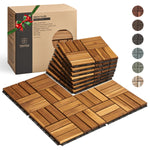You have no items in your shopping cart.
Are you struggling with a maggot infestation in your home or garden? Maggots can be a revolting and unwelcome sight, but worry not! In this comprehensive guide, we will explore effective methods to eliminate maggots and prevent future infestations. From identifying the source of the problem to implementing practical solutions, we've got you covered. So, let's delve into the world of maggot eradication and bid farewell to these troublesome critters once and for all!
Introduction
Maggots are the larval stage of flies, and they thrive in environments rich in decaying organic matter. These slimy creatures can quickly multiply, infesting various areas of your home, including garbage bins, compost piles, pet waste, and even rotting food. Not only can maggots cause a foul odor and be unsightly, but they can also be potential carriers of disease.
How Do You Get Rid of Maggots?
Now that we understand the nuisance maggots can be, let's explore some effective methods to get rid of them. Remember, the key to successful maggot removal is targeting both the existing larvae and their source of sustenance. By doing so, you'll break the life cycle and prevent future infestations. Let's get started!
1. Clean and Sanitize the Infested Area
The first step in maggot eradication is to thoroughly clean and sanitize the affected area. Remove any decaying matter, such as spoiled food, dead animals, or pet waste. Use a strong disinfectant to sanitize the area and eliminate any odor that may attract flies. Wipe down surfaces and ensure there are no hidden pockets where maggots might be hiding.
2. Dispose of Infested Materials Properly
Proper disposal of infested materials is crucial in preventing maggots from reappearing. Double-bag any waste containing maggots, seal it tightly, and dispose of it in an outdoor garbage bin with a secure lid. If you have a compost pile, make sure it is covered and properly maintained to prevent flies from laying their eggs.
3. Vacuum or Sweep Maggots Away
If you discover maggots crawling on your floors or carpets, a vacuum cleaner or a broom can come to the rescue. Use the hose attachment on your vacuum or a broom to sweep up the maggots. Remember to dispose of the vacuum bag or empty the dustbin immediately afterward to prevent any potential reinfestation.
4. Use Boiling Water
Boiling water is a simple yet effective method to kill maggots and their eggs. Carefully pour boiling water over the infested area, ensuring you cover all the maggots. This method is particularly useful for outdoor infestations, such as in garbage bins or compost piles. Exercise caution when handling boiling water to avoid burns.
5. Apply Vinegar or Bleach
Vinegar and bleach are powerful substances that can help eliminate maggots. Mix equal parts vinegar or bleach with water in a spray bottle and liberally apply it to the infested area. These solutions not only kill maggots but also help neutralize odors that may attract flies.
6. Use Insecticides
Insecticides can be an effective last resort for severe maggot infestations. Look for insecticides specifically formulated to target maggots and follow the instructions carefully. Keep in mind that chemical insecticides should be used with caution, especially in indoor areas, and should be kept away from children and pets.
7. Employ Biological Control Methods
Biological control methods involve using natural predators or parasites to eliminate maggots. For example, introducing parasitic wasps or nematodes to the infested area can help control maggot populations. Consult with a professional pest control expert to determine if biological control methods are suitable for your situation.
8. Seal Entry Points
Preventing flies from entering your home is essential in avoiding future maggot infestations. Inspect your doors, windows, and screens for any gaps or openings and seal them properly. Consider installing fly screens or door sweeps to keep flies out while allowing fresh air to circulate.
9. Practice Proper Garbage Management
Proper garbage management is crucial in preventing maggot infestations. Ensure your garbage bins have tight-fitting lids and clean them regularly to remove any food residue that may attract flies. It's also advisable to place garbage bins away from entrances and windows to minimize fly access.
10. Maintain a Clean and Hygienic Environment
Keeping your home clean and hygienic is key to deterring flies and preventing maggot infestations. Regularly clean your kitchen, dispose of food waste properly, and promptly clean up any spills or messes. Regularly empty and clean pet litter boxes and ensure your pet's waste is disposed of in a secure manner.
Identifying Maggots
Before we dive deeper into maggot eradication, let's take a moment to familiarize ourselves with the appearance of these repulsive larvae. Maggots vary in size, shape, and color depending on the species, but they typically have a soft, cylindrical body with no legs. They are often white or cream-colored, although some species may have a yellowish or greenish hue. Maggots are highly mobile and have a distinct ability to squirm and crawl.
Understanding Maggot Infestations
Maggot infestations occur when flies lay their eggs in favorable environments rich in organic matter. These environments provide an abundant food source for the hatching larvae. Understanding the common sources of maggot infestations can help you identify and address the problem effectively. Here are some common scenarios where maggot infestations may occur:
-
Garbage Bins: Improperly sealed or neglected garbage bins can become breeding grounds for flies, leading to maggot infestations. Rotting food, discarded meat, and spoiled produce can attract flies to lay their eggs.
-
Compost Piles: While composting is a sustainable practice, neglecting proper maintenance can result in maggot problems. Flies are attracted to decomposing organic matter, so it's crucial to balance your compost and turn it regularly to prevent flies from laying their eggs.
-
Pet Waste: Failing to clean up pet waste promptly can attract flies and result in maggot infestations. Ensure you regularly clean and dispose of pet waste in a secure manner to avoid these issues.
-
Rotting Food: Leftover food, especially in warm and humid conditions, can quickly become a breeding ground for flies. Check your pantry, kitchen, and refrigerator regularly to prevent maggots from feasting on forgotten or spoiled food.
FAQs about Maggots
FAQ 1: What attracts maggots?
Maggots are attracted to decaying organic matter, including rotting food, animal carcasses, and pet waste. They are particularly drawn to strong odors emanating from these sources.
FAQ 2: Are maggots harmful to humans?
While maggots themselves are not harmful to humans, they can be an indication of poor hygiene or the presence of disease-carrying flies. It's important to address maggot infestations promptly to maintain a clean and healthy environment.
FAQ 3: Can maggots survive without a food source?
Maggots require a food source to survive and develop into flies. Without access to organic matter, they will not be able to complete their life cycle.
FAQ 4: How long do maggots live?
The lifespan of maggots varies depending on the species, environmental conditions, and available food sources. In general, maggots go through several stages of development, and the time it takes to reach adulthood can range from a few days to several weeks.
FAQ 5: Can maggots infest living animals?
In certain cases, maggots can infest living animals, such as pets or livestock, if there are open wounds or untreated infections. This condition, known as myiasis, requires immediate veterinary attention.
FAQ 6: How can I prevent future maggot infestations?
To prevent future maggot infestations, it's essential to practice good hygiene and proper waste management. Keep your environment clean, dispose of garbage correctly, and seal any potential entry points for flies.
Conclusion
Dealing with a maggot infestation can be an unpleasant experience, but armed with the right knowledge and strategies, you can effectively eliminate these bothersome larvae. Remember to identify the source of the infestation, clean and sanitize the affected areas, and implement preventative measures to keep flies at bay. By following the steps outlined in this guide, you'll be well on your way to a maggot-free environment.








